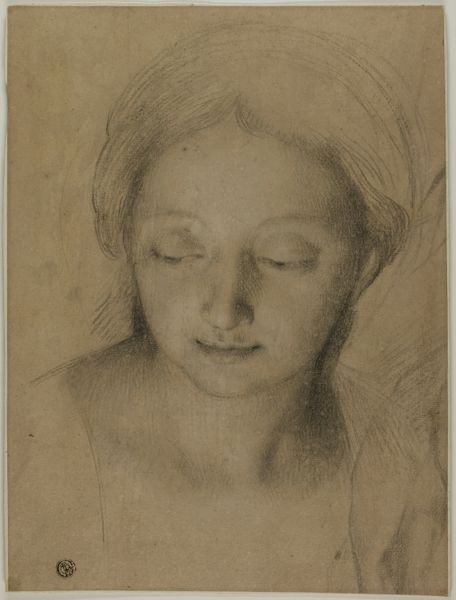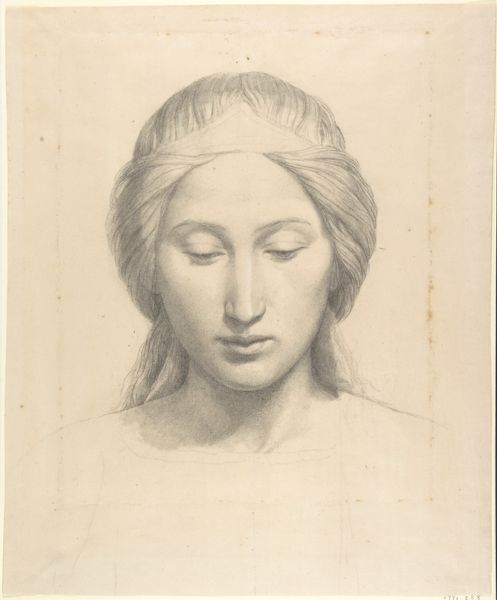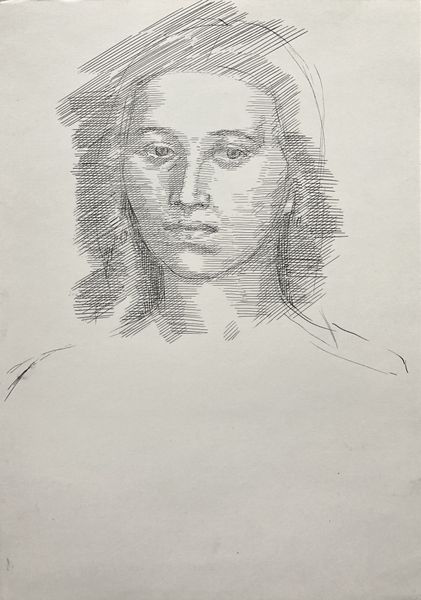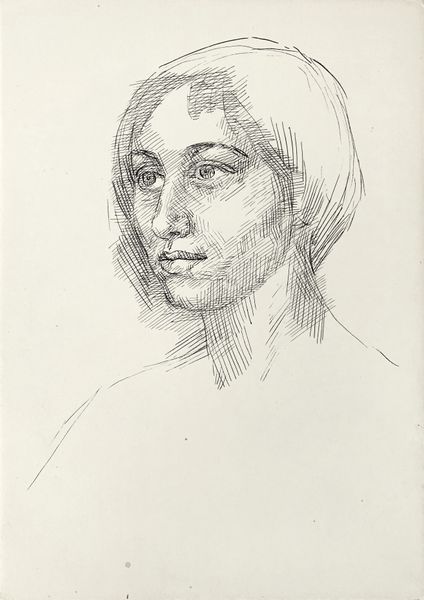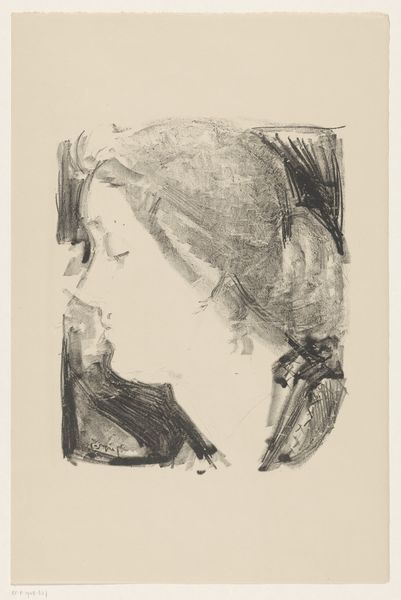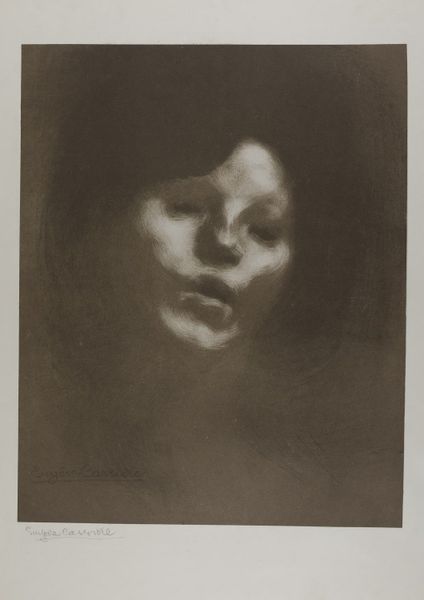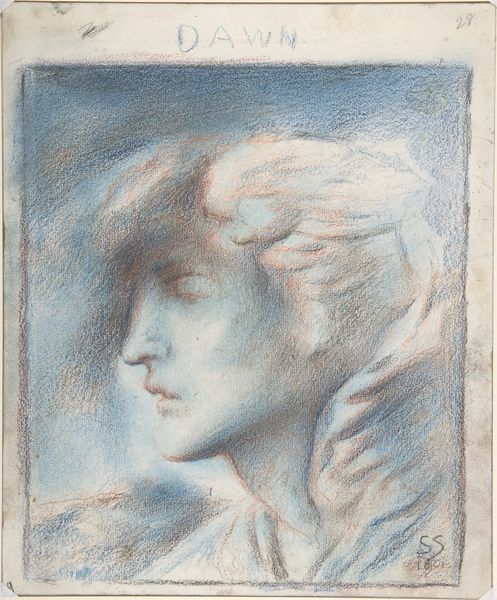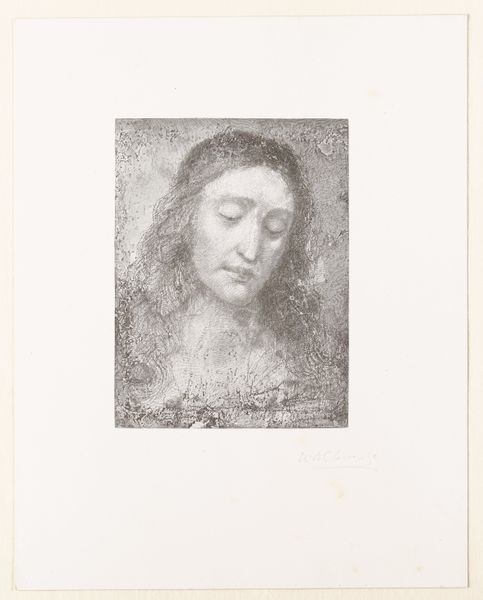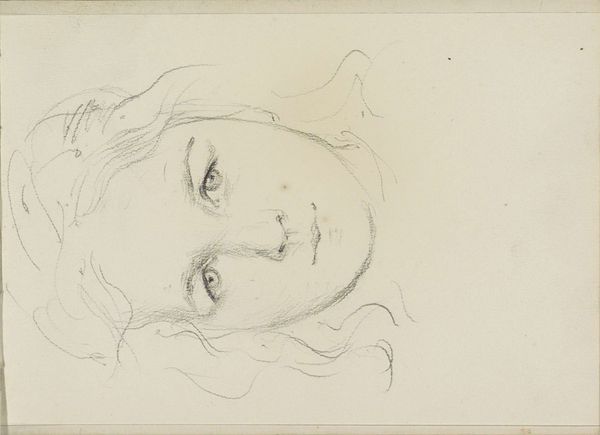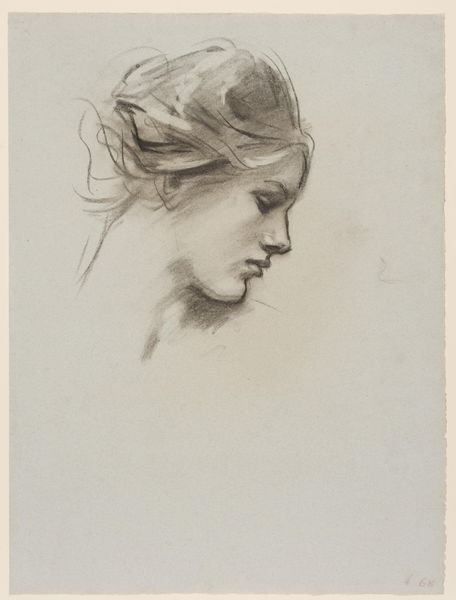
Dimensions: 345 mm (height) x 254 mm (width) (bladmaal)
Editor: We're looking at G.F. Clement's "Kvindehoved," which translates to "Woman's Head," a lithograph from between 1867 and 1933. The shading gives the figure a really soft, almost dreamlike quality. What strikes you about this piece? Curator: It’s interesting how Clement employs what we might consider an ‘academic’ drawing style – very refined, delicate – for a subject that seems deliberately ordinary. There’s no idealization here, unlike much portraiture from the earlier 19th century. Consider the art world at the time. Impressionism was shaking things up. This portrait occupies a strange middle ground: traditional technique meets a modern, almost anonymous, subject. Does that resonate with you? Editor: Absolutely. I can see the tension between the classic skill and the everyday person it depicts. Was there a push, then, to democratize art subjects? Curator: Precisely! The rise of Realism and early Impressionism involved rejecting grand historical narratives and embracing contemporary life. This drawing might reflect a growing interest in representing the lives of ordinary women, perhaps a shift towards acknowledging their presence and individuality within a society still largely dominated by male perspectives. Who was art intended for, and whom did it portray? Those questions were becoming more urgent. Editor: So it's more than just a pretty picture, it's a statement about who deserves to be seen in art. That makes me see it differently. Thanks! Curator: Exactly! It's a reminder that even seemingly simple portraits can carry significant cultural weight. Considering the social and artistic landscape transforms our perception of art.
Comments
No comments
Be the first to comment and join the conversation on the ultimate creative platform.


